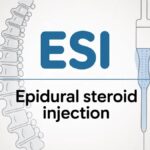Have you ever wondered how FAST Scale Dementia progresses over time and what signs to watch for as the condition advances?
Just imagine your loved one, once independent and capable, slowly needing help with tasks that were once second nature, like dressing, eating, or even remembering the way home.
The journey through dementia can be an emotional and often bewildering experience for both the person affected and their caregivers. From subtle forgetfulness to the loss of all physical and cognitive abilities, the path can seem unpredictable.
But what if there was a way to anticipate the challenges ahead? Familiarity with stages of dementia and knowing what to prepare for really help families prepare to provide proper care and make proper decisions on when to seek more supportive services. Let’s dive further into how these stages look and how recognition can guide the caregiving process.
What Is the Fast Scale for Dementia?
The dementia FAST Scale is a tool used by health professionals and is helpful in guiding caregivers in knowing what to expect. Even though the FAST scale dementia is not that common, it can be very useful for getting at least an idea of where and when to refer a patient to hospice care. It includes seven steps:
- No functional impairment
- Early functional changes
- Mild functional loss
- Moderate functional loss
- Moderately severe functional loss
- Severe functional impairment
- Total dependence
Now, let’s have a detailed overview of these stages.
Stages of the FAST Dementia Scale
As discussed above, the FAST Scale Dementia stages the progression of dementia using stages of ability levels that one may use to perform daily activities. There are seven stages in total, and the higher the stage, the worse the impairment is.
Here is a detailed breakdown of the stages of the FAST Dementia Scale:
Stage 1:
The individual shows no noticeable difficulties in functioning and does not complain of any issues.
Stage 2:
The individual begins to experience mild cognitive challenges, such as:
- Difficulty finding words
- Forgetting the location of objects
- Minor work-related difficulties
Stage 3:
This stage marks the early onset of Alzheimer’s-type dementia (ATD), with noticeable difficulties in daily functioning, including:
- Decline in work performance
- Reduced organizational ability, as observed by family, friends, or coworkers
- Difficulty navigating to unfamiliar locations
Stage 4:
At this stage, the individual experiences mild ATD, with significant difficulty managing more complex tasks, such as:
- Planning social events
- Managing personal finances
- Shopping for necessities
Stage 5:
In this stage of moderate ATD, the individual requires assistance with daily activities, such as choosing appropriate clothing for different occasions, seasons, or events.
Stage 6:
This stage indicates moderately severe ATD. The individual may make frequent errors in daily activities, such as:
- Dressing incorrectly without help
- Struggling to bathe properly
- Having difficulty with toilet hygiene, including forgetting to flush, mis disposing of toilet paper, or not wiping correctly
- Experiencing urinary or fecal incontinence
Stage 7:
In the severe stage of ATD, cognitive and physical abilities are severely diminished. The individual may exhibit the following signs:
- Limited speech, often reduced to six or fewer intelligible words per day or during an interview.
- Only one intelligible word, often repeated continuously.
- Inability to walk or sit up without assistance
- Loss of the ability to smile or hold their head up independently
The FAST Scale: Hospice Care Criteria
FAST is a priceless tool for caregivers of patients suffering from Alzheimer’s or related dementias. It will offer a systematic, problem-solving approach to formulating a plan of treatment for each patient based on individual needs. The fast score dementia obtained using key functional tasks such as dressing and eating will subsequently determine specific nursing interventions that the patient needs.
Crucially, the FAST scale dementia allows carers to shift care plans easily according to a patient’s condition changes; they are best prepared to make decisions in a timely manner and in an informed manner.
How is the FAST Scale Helpful?
The FAST scale for dementia is notable because, in the case of Alzheimer’s disease, any changes a person experiences follow a predictable, sequential pattern—stages are not skipped.
For example, if someone retains abilities from an earlier stage, like dressing and choosing clothes, but shows slight memory loss that would be expected at a later stage, this suggests their issues are not caused by Alzheimer’s. This distinction is important because it may indicate that their condition could be treatable or reversible.
Conclusion
The FAST Scale of dementia helps elucidate and predict the progression of Alzheimer’s and other dementias. The categorization into seven stages may be much better in estimating impairment levels and help caregivers make more informed decisions about care. Staging helps families prepare themselves for challenges at every step, from mild cognitive decline to total dependence. More importantly, the FAST Scale Dementia provides information regarding when hospice care will be necessary and thus ensures that patients receive the most appropriate support at each stage. To summarize, it is an important tool in providing timely, compassionate, and informed care.
If you want to read more, visit our blog page. We have more topics!







